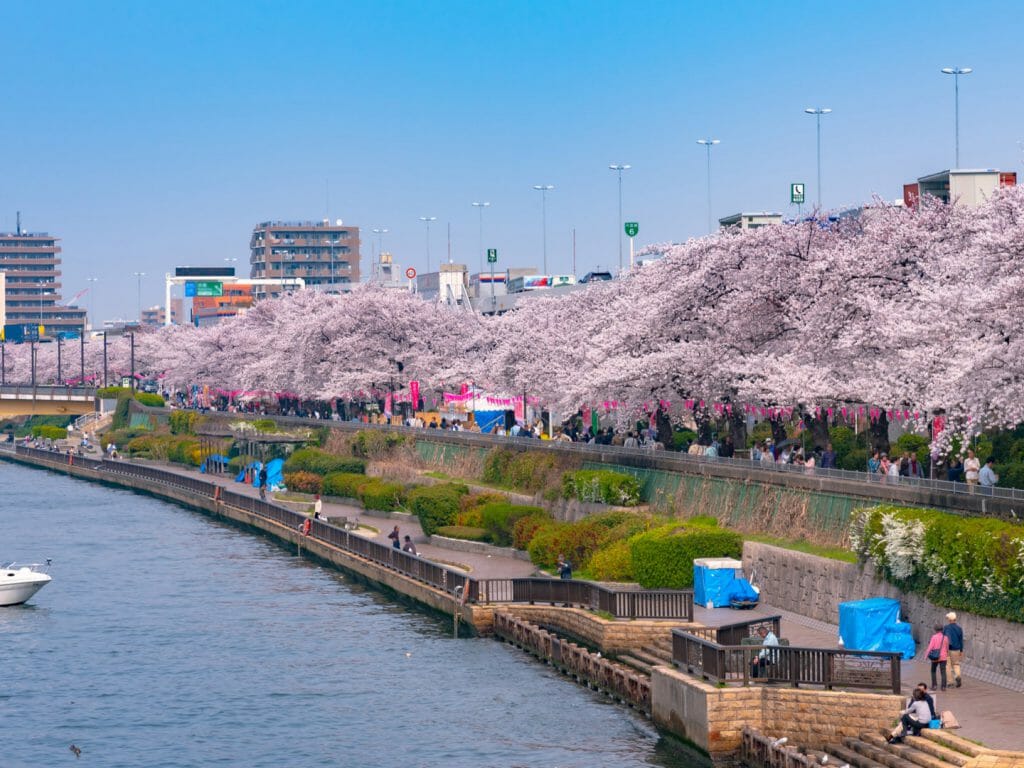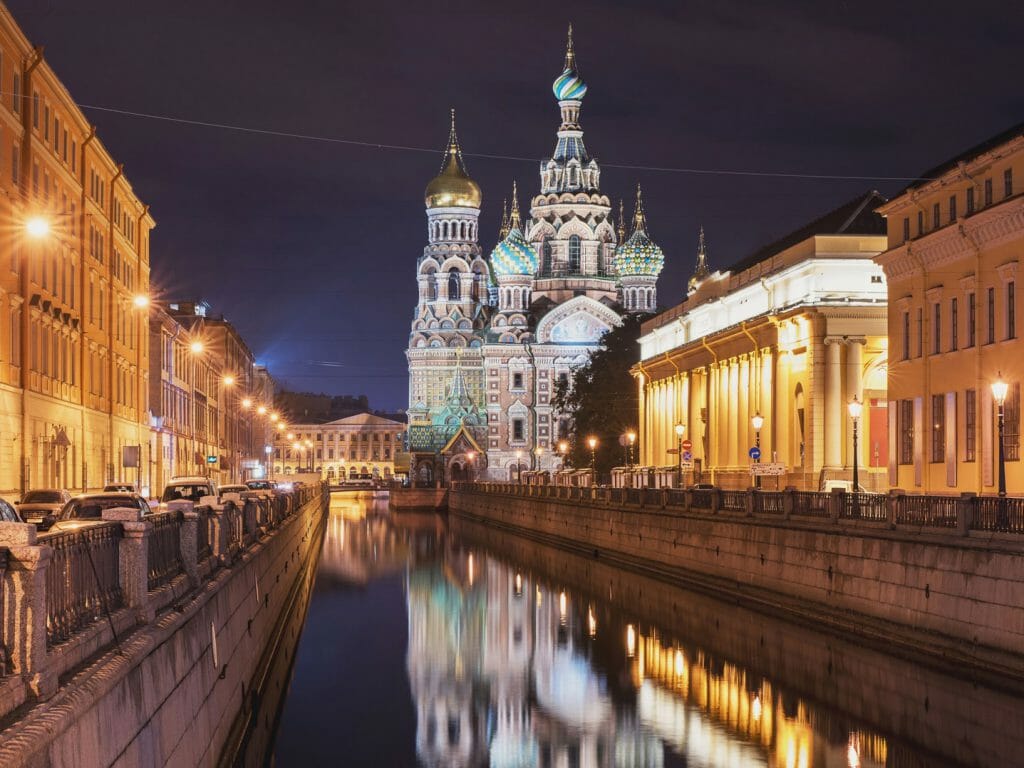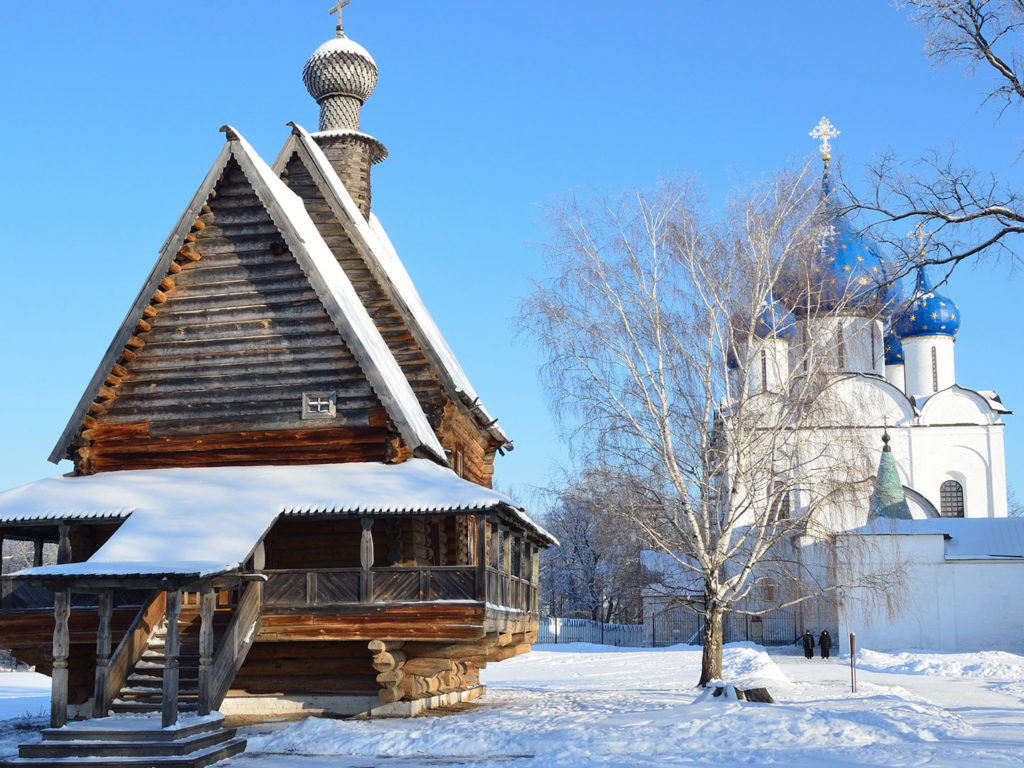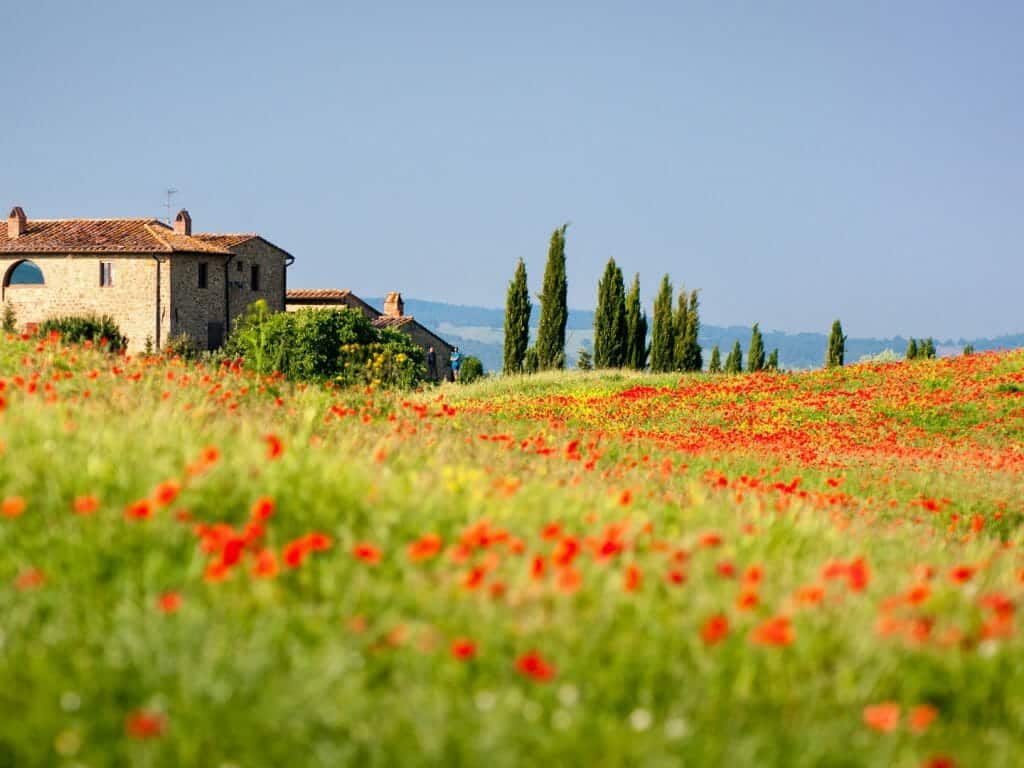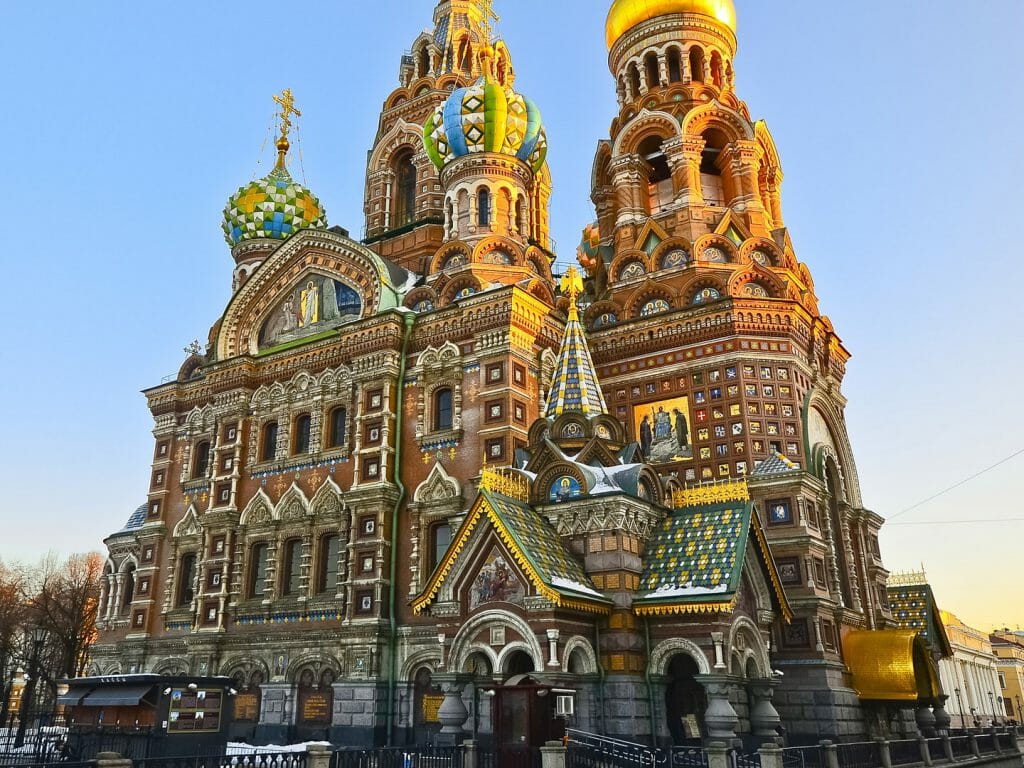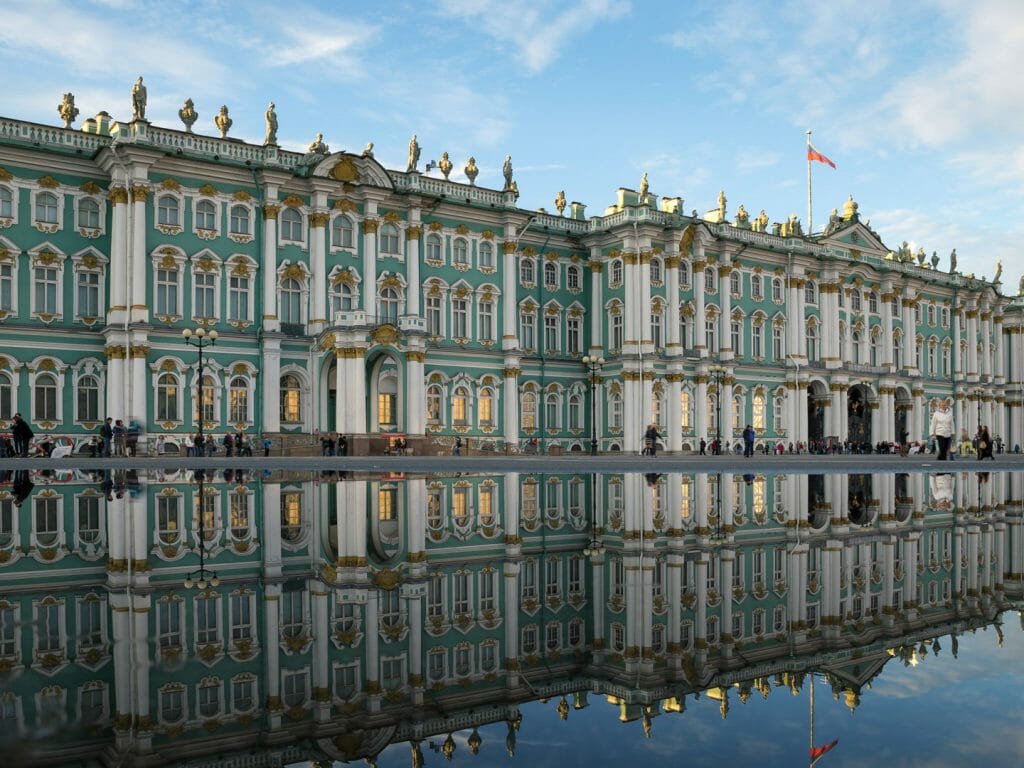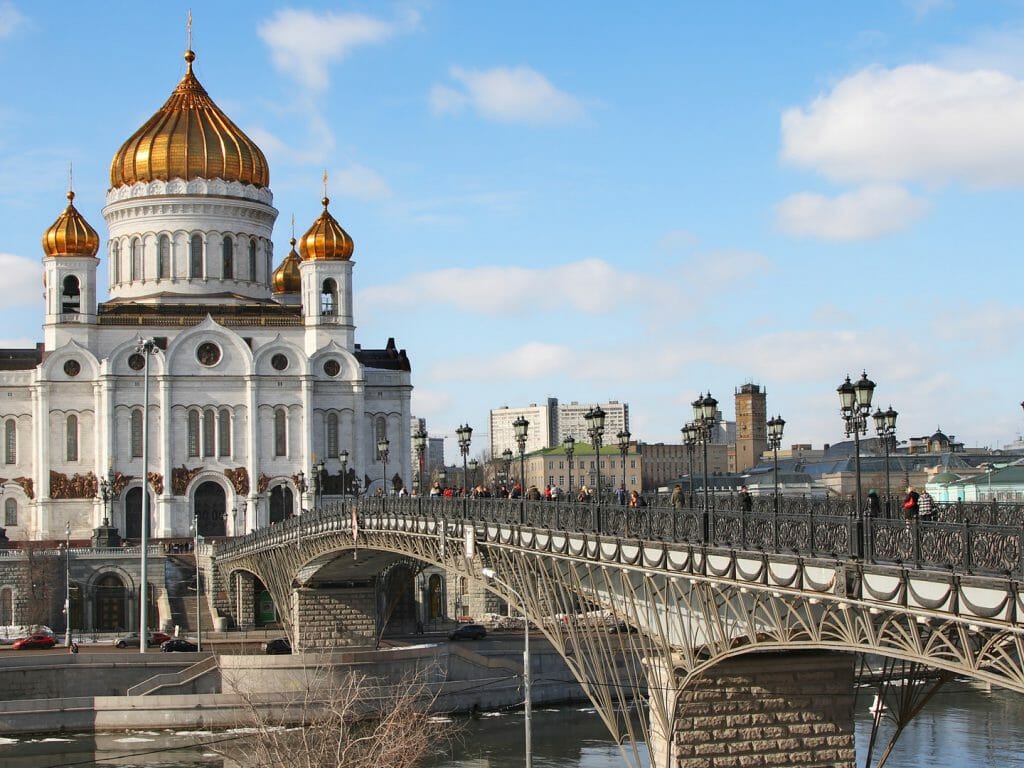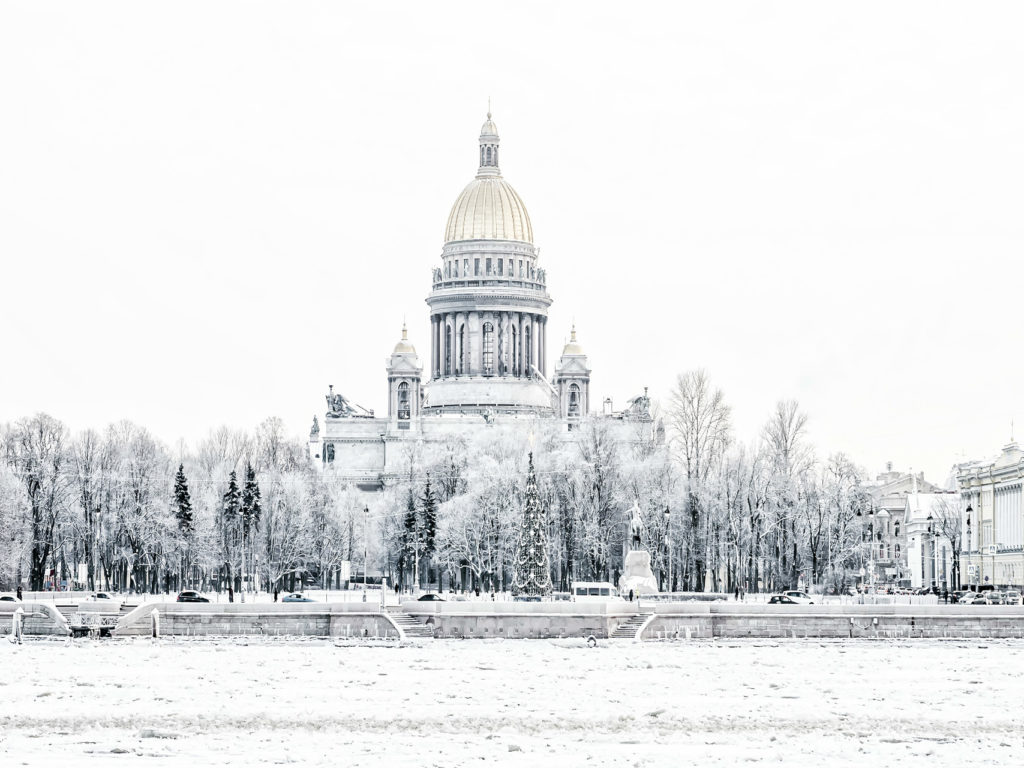“We were waiting for you” the lady said.
I acknowledged her and apologised.
“Haven’t I seen you before. Are you involved in tourism?”
I nodded, slightly perturbed.
“Were you in Central Asia?” she asked.
“Yes, did I meet you in Uzbekistan?” I replied.
Her typically warming central Asian features and iron ore coloured hair started to become familiar with me. It’s a small world but that’s exactly what is fun about travelling and working in such interesting destinations.
I was in Moscow to begin a dream journey, 9288 km, along the Trans-Siberian Railway to Vladivostok. To put it into context the train takes 8 days non-stop, to fly takes 8 hours.
I had not been to Moscow for more than 15 years. The Rossiya Hotel, the monolith of Soviet architecture was a mere hole in the ground; plants and small trees rooting through the concrete. Red Square had not changed and St Basil’s was now worth a visit. Previously it had been sterile and empty. The Kremlin inspires every traveller and the Armoury Museum in it is fabulous. Museums have a habit of becoming a “bore” if too large and too much time is spent in them but the Armoury is in no way guilty of this and has many an exhibit to stare at in awe.
The great thing about taking the Golden Eagle Luxury Train is the care and attention the staff take in making sure everything is as good as it can be. The trip exceeds many traveller’s ideas of what they are to expect and many of my companions did not realise that this or that was included or that they had a choice. Imperial Suite customers get their own private guide and car at each location. They can choose what they want to see. However, this is not a prescribed list of suggestions. Almost anything is possible. One couple on my train wanted to see the zoo in Novosibirsk, visit supermarkets and local markets and take a shave with a cut-throat razor at a barbers or on the street. The rest of us were more than content with a choice of usually three touring options at each stop.
We did stop to see the main points of interest in Kazan, Yekaterinburg, Novosibirsk and Irkutsk. The train went on via to Ulan Ude to Vladivostok but I was to leave the Golden Eagle in Irkutsk and take the Russian railways for the remainder of the journey.
More of that later.
There certainly is a mysticism about travelling East. The journey started out in thick cloud and rain, a dull Moscow brightened up by preparations for the forthcoming May 9th Victory in Europe day celebrations. WWII in Russia is called the Great Patriotic War. Odd, somehow, to think we were on the same side once before the cloak and dagger Cold War took hold. We departed from Yaroslavl station in Moscow and were treated to a champagne and canapé reception in the very grand and elegant high ceilinged VIP lounge. It was recreating travel of old. Our train attendants met us in the lounge, were introduced to us and then escorted us to the train through a line of black uniformed police officers complete with bullet proof vests, truncheons and probably a lesson or two in armed combat and defence.
Train travel is often underestimated, thought to be slow and antiquated. I, however, given the chance, prefer it. I think it gives a different perspective on the country. You see behind the scenes, beyond the display; its shining glory. Russia is no different. The suburbs are full of “lock-ups”, lines of single-story garages where people keep cars, store their belongings and sometimes even live. Walls are covered in graffiti and rubbish is thrown over fences or just dumped. Stray dogs roam and odd bodies, usually of men, huddle, drinking vodka and generally looking shady. Russia can be a tough place for those at the bottom and there are few safety nets.
There are endless miles to cover. The trains do not go particularly fast so there is plenty of time to see and absorb. Apart from the big cities, we stopped at Omsk, Khabarovsk and Chita, most towns are quite small. In fact, many people simply live in villages of wooden houses. I always wonder how they came to be here, why they are here and what do they do. Each house has a massive woodpile to withstand the long harsh winters, some have painted window shutters and they all have well-kept gardens to grow vegetables, keep chickens, geese or ducks and perhaps a cow or two. There is also, almost certainly, a huge guard dog chained to a post. These same huge dogs guard the railway bridges.
The terrain is largely flat and even the Ural Mountains that separate Europe from Asia is not more than a gentle rise in elevation. The train snakes through forests of birch and skirts large open patches of the steppe as far as Irkutsk. No fences here but people’s copses and small woodlands are marked by a tractor’s plough width around the relevant plot. From Ulan Ude Spring was more advanced, the grass greener and the birch switched to deciduous forests of hardwood. Lakes appeared and more rivers flowed whilst men fished from the banks or from small boats. I saw a mother walking home with her two sons, fish hanging from a wooden pole, very Tom Sawyer.
I expected to see more wildlife, deer perhaps, but all I saw were a few water birds and birds of prey. I did see what looked like a limping wolverine in the open by the railway tracks but it was difficult to determine exactly what it was.
A highlight of the Golden Eagle Luxury Train trip was travelling through the night on the old railway from Irkutsk to Lake Baikal and on to Port Baikal. There was heightened expectation in the morning not only of seeing Lake Baikal as the sun glowed orange at sunrise but of catching glimpses of the steam locomotive that had hauled us here on this leg of the journey. We stopped mid-morning at the entrance to a tunnel. Here we disembarked and spent the next two hours marvelling at the train, taking pictures of the lake or climbing up the hillside for a panoramic view.
The locomotive made all manner of hissing noises as it built up steam, retracing its route up the line before stopping and travelling back towards us, blowing its smoke high into the air. Jets of steam exited sideways from under the train like a dragon snorting and protecting its territory, magnificent. We then boarded the diesel locomotive and travelled on the walkway outside the engine giving us a prime open-air view of the lake and scenery we passed by. Two special experiences appreciated by all. After moving further towards Port Baikal and stopping for a BBQ lunch of Baikal Omel, a fish endemic to the lake, we took a boat across to Listvianka, a small village, an hour away from Irkutsk. Here I left the Golden Eagle train to begin my adventure on Russian Railways.
Listvianka stretches along the shores of the lake and into a couple of valleys. It is popular with Russians and a good base from which to explore the area. The alternative taxi service here is by hovercraft. I arrived on a dreary cold grey afternoon and the next day I awoke to a blanket of white snow. The colder weather was unexpected, but it gave my surroundings a sense of atmosphere. My wooden hut accommodation in Listvianka was quaint and very simple, yet the floor of my room was heated and the electric heater worked a treat. It does not matter where you are in Russia, they know how to keep warm, excessively so sometimes. In most towns the authorities determine when the heating will come on and go off. Once off it does not come on again until the following Autumn. A hangover from Soviet organisation. Several days before it had been +20’c and now we were into minus temperatures.
My first journey on Russian Railways was a short 8-hour overnight journey from Irkutsk to Ulan Ude. This is a convenient train as most clients eat before boarding and then arrive in time for breakfast at a hotel. The only thing to think about is the toilet arrangements. Two Western-style toilets are located in each carriage. Most clients travel in either Coupe (shared 4 berths) or Deluxe (2 berths) and not in the open Plaskart (6 berths with no compartment walls). These days the carriage attendants sell light bites, chocolate bars, crisps, noodles, provide tea or rent you the glass to make your own. A “samovar” of boiling water is always on hand. The train is also equipped with electrical sockets so no problem in charging mobile telephones, I-Pads or camera batteries, just bring a universal adaptor.
Whilst Moscow, Yekaterinburg and Novosibirsk are Russian, Kazan is Tartar (and Muslim). Irkutsk is a mix of both Russian and Buryat and Ulan Ude largely Buryat (Buddhist & Shamanist). Coexisting with the accommodating Buryats near Ulan Ude are the Old Believers, Christians who exiled themselves to Siberia in the 17th century after disagreeing with changes to the Russian Orthodox Church. These communities not only dress in colourful costumes they decorate their houses in bright colours too. They are recognised by UNESCO as one of the 19 Cultural Treasures of the World. Listening to their singing in Tarbagtai village was a delight. Ulan Ude has the largest Buddha in Russia in the newly built and evolving Bagsha Datsen (Monastery) and the largest head of Lenin too. On the day I visited Ivolginsky Datsen I was treated to a major event. In 1927 the 12th Pandito Hambo Lama died. He told his followers to bury him and check on him 30 years later. His body was exhumed. He was sitting in the lotus position in which he remains today. He is now mummified but several times a year he is shown to the public. Pilgrims come to the monastery and do the kora, a walk past the shrines and prayer wheels, and pay homage to the Lama. The chanting by the crimson-clad monks was magical, the sun shining and the religious following very evident.
Leaving Ulan Ude for Vladivostok meant some planning, I thought anyway. This was a non-stop journey of 3 days and 3 nights. I packed what I did not need and stored it under my bunk (I had a lower berth in a shared 4 berth compartment) in one bag and had a small bag for changes of clothes and another for food I purchased in the market the day before my departure. Part of the reason for taking the Russian Railways was to experience what had changed in the 25 years since I had first done a small section of the journey. The train left at 04.17 in the morning. The thing about travelling on the Trans-Siberian Railway is that you pass through 7 time zones between Moscow and Vladivostok so you are continually moving your clock forward by an hour almost every day. To keep things in check all trains run on Moscow time. A timetable on the carriage wall lists all station stops, the duration of the stop (anywhere between 1 minute and 22 minutes) and the Time + the number of hours from Moscow or minus if travelling East to West. At the end of the carriage a display gives you Moscow time, your carriage number and the temperature, usually a pleasant 21-24 C.
There is an etiquette about travelling by train. Travellers will board in their suits, uniforms or their finest clothes. Once on board and settled in they change into their train wear. Perhaps shorts and T-shirt or a tracksuit. Adidas preferred for men and a velour two-piece travel suit for women. Before disembarking they get dressed into their finest once more and off they go.
I met with the train engineer after failing to make the carriage attendant understand that I was interested in taking a shower. He spoke very good English and had been travelling, I think, back and forth on the Trans-Siberian for the last 8 years living on the train when away from home and with only perhaps a 5-day break between journeys during the busy Summer period. I had heard that there were showers on board and I wanted to see for myself what was offered and how it worked. I was on Train 2 (West to East), the best train in the country (Train 1 goes East to West). I was shown the shower. It was a good size with a curtain and housed in a good size room with an ironing board and a bench but interestingly no sink. I was warned that you only got a limited number of litres of water before it stopped work so I rushed not wanting to be stranded covered in soap and having to hail the non-English speaking attendant. The pressure was good, I did not run out of water and for about £2.45 I was again clean. Adjacent to the shower was a compartment for disabled use with an extra-wide door and a lift to assist with wheelchairs on and off the train. My final task, at the request of a client who I have booked on the train, was to investigate cold storage for medicines. The engineer helped me again. He told me that the restaurant could probably store them but in any event, each attendant had in their compartment a small refrigerator and this was probably good to use. Diabetics are catered for too.
Arriving in Vladivostok felt like an achievement. Following the Pacific coast on the last section into the city said: “this is the end, there is nowhere else to go”. I had expected the train to consist of many carriages and be full of people. Most, I guess, opt for the Trans-Siberian through Mongolia. The train was not long, was not crowded and so felt special in a way because so few people were doing this section. Vladivostok, for a long time a forbidden city, was the end. Built on a peninsula it has a small historic centre making it easy to explore whilst on the hills that stretch away in all directions, West anyway, huge (I mean huge) residential blocks of flats cover every square foot. I walked across the Golden Gate Bridge in bright sunshine providing excellent views of the town. The next day a swirling mist hung over the bay and the bridge was not visible at all.
A fitting end to a wonderful journey along the World’s longest railway.


